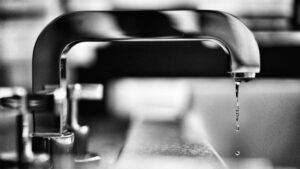How to Install a New Water Heater
Today, instant hot water is no longer considered a luxury; it is now more of a necessity. When you have a water heater, you don’t have to run the bath for several minutes to get the right temperature. You won’t suddenly be drenched by cold water in the middle of enjoying a warm bath as well.
The key to enjoying a warm or hot water every time you need it is to install your water heater properly. Although this is a job best left to experts, there is nothing wrong with trying to install it yourself. And once you have any problems going through with any of the installation steps, you have to call a professional plumber immediately.
Installing Your Electric Water Heater
Below are the steps on how to install a new water heater properly and safely:
Turn off the water and electricity supply
Shut off the circuit breaker for the line where you will connect the heater. Next, turn off the home’s main water shutoff valve or the shutoff valve at the cold water supply line running to your current heater.
Drain the old tank
Turn off the cold water supply to the heater. This is often located at the top of the unit. Next, connect a hose to the water heater’s drain valve and open the valve. Place the end of the hose near a floor drain or into a pail.
Make sure you drain the tank completely before you turn off the valve and remove the hose.
Disconnect the electric and plumbing connections
Next, disconnect the water heater’s electrical wires. Label the wires or take a picture so that you can easily use them later when connecting your new heater’s wires. Once done, disconnect the hot and cold water supply pipes.
If your current heater used copper piping, you may need to cut the pipes. Use a pipe tubing cutter to do this and leave as much of the pipe as possible.
Remove the old heater and place the new one
Once you have taken down the old tank, place the new heater into position. Make sure you line it up with the existing electrical and plumbing connections.
Next, install the different fittings. These include the temperature and pressure relief or TPR valve and discharge drain pipe. Make sure you follow the manufacturer’s installation instructions.
Connect the water pipes
If the cold water supply does not have a shutoff valve, now is the time to install one. When done, use the correct fittings to connect the cold water inlet and hot water outlet on the water heater to their respective pipes. Be sure to use the correct type of fittings.
Connect the heater to the electrical source
Use the previous wire connections as a guide and connect the new wires in the same way that you removed them. Make sure you follow the labels when connecting the cables to the electrical source.
Set the temperature
Turn on the cold water supply valve to the water heater and turn on the main water supply valve to fill the tank with water. Next, restore power to the water heater circuit. Set the temperature between 110 and 125 degrees F and wait until the water in the tank comes up to temperature. Leave the water turned on for a few minutes to ensure that the heater maintains the desired temperature.
Getting Help from Pros
As you can see from the steps above, installing a new water heater is not an easy task. You will need a number of plumbing tools which you may not have as well.
If you don’t want your new water heater to become a fire, explosion, and health hazard, hire a pro to install it properly.
By hiring a plumber to handle the installation, you:
- Ensure the electrical lines are connected properly and safely
- Allow the ignition sources to be checked, cleaned, and repaired, if necessary
- Avoid damaging the TPR
- Avoid the possibility of bacterial contamination
By letting a trusted Appleton plumber handle the water heater installation, you will be sure you can use your newly installed electric water heater as soon as possible. You will be able to use it safely for a long time as well.


